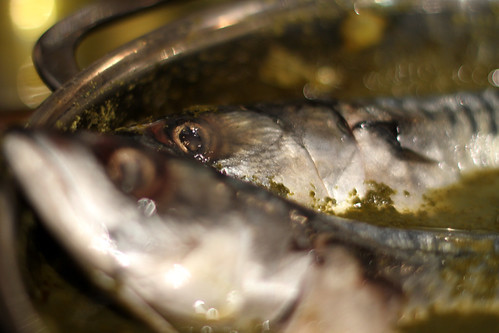 The larger better-known of the two countries named after the Congo River is the Democratic Republic of Congo, the former Zaire and previously a Belgian colony, but that shows up in the D's. This meal is from the north side of the river, the Republic of Congo, the former French colony, sometimes known as Congo-Brazzaville after its capital.
The larger better-known of the two countries named after the Congo River is the Democratic Republic of Congo, the former Zaire and previously a Belgian colony, but that shows up in the D's. This meal is from the north side of the river, the Republic of Congo, the former French colony, sometimes known as Congo-Brazzaville after its capital.
Anyway, as you might imagine, it's a bit tricky to find what's distinctively from this country as opposed to its cross-river sibling, both because they eat similar things and also because the similar name makes it hard to search precisely. But I managed! While this is hardly the first time we've encountered cassava leaves, this preparation takes advantage of Congo's coast and throws in fish. And for the first time we're approaching bush meat! Read on for the tasty details.
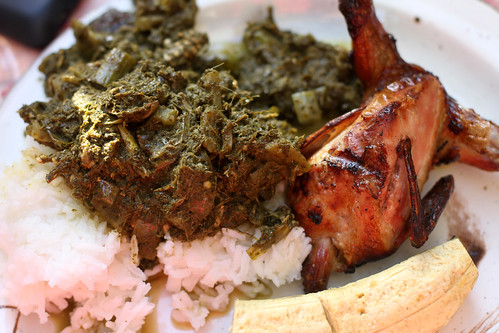
The threatened thunderstorms never arrived, and it was just a perfect evening on the deck. It was a really fun crowd, with Melvin, Pegi, Alex, Barrak, Hillary, Dan, Jessica, Beni, and Barmey trading stories for hours.
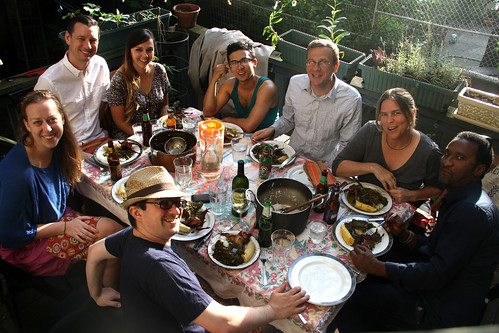
Cailles grillées au piment et au gingembre | Grilled quail with chili-ginger marinade | Recipe: French, English translation
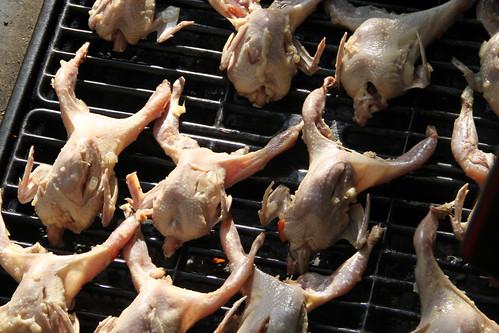
All manner of animals are either hunted or raised in Congo, of which quail is a good example. And this marinade is a good example of the simple, straightforward, and tasty approach that so much African food shows: mash up some onions, garlic, ginger and chilies, toss in some salt and oil, and you've got yourself a marinade. By cutting slits in the meat, more flavor can get in. Then just throw them whole on the grill, turn 'em a few times, and they're really tasty. Don't be scared by the amount of chili pepper in the recipe, since it's a marinade you're only really eating a fraction of what you put in. I would definitely recommend this for even less adventurous meats like chicken; if you don't want to mash it by hand you could make a fine marinade in the blender. If you're making it with quail, just remember that each one weighs barely a quarter-pound, so think of it more as an appetizer at one apiece.
Saka-saka | Cassava leaf stew with mackerel | Recipe: French, English translation
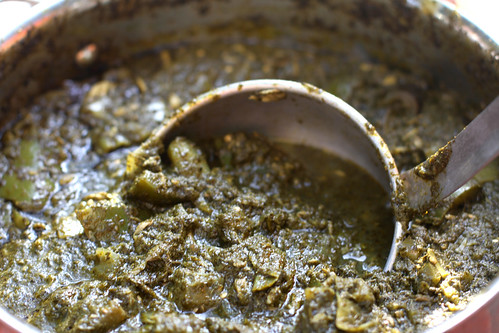
One hazard when cooking the most "authentic" recipes is that they assume you're cooking from the same type of ingredients that you'd find on the ground. But it turns out there's a pretty big difference in cooking fresh and frozen cassava leaves, which I only realized when I found this recipe that was specifically developed for the frozen kind. Turns out you gotta cook it a heck of a lot longer!
Another great improvement over the Burundian and Central African versions of this dish is the addition of fish. These two whole mackerel did a lot for both the flavor and the texture. I also learned a novel technique for removing the bones: put the fish on top of the stew for about ten minutes to heat it up, remove it, and the meat just slides off the spine. Genius!
I did make a few variations on the recipe. The "whole bottle" of red palm oil was ambiguous, I ended up using about half the one-liter bottle I had. I also took two bits from another recipe: I sauteed the onion and garlic in the oil before adding it to the dish, and I crumbled in two little bouillon cubes (equivalent of one American-sized cube) rather than just adding salt. I left out any chilies, and instead passed around some Peri-Peri hot sauce.
Bananes plantains | Green plantains
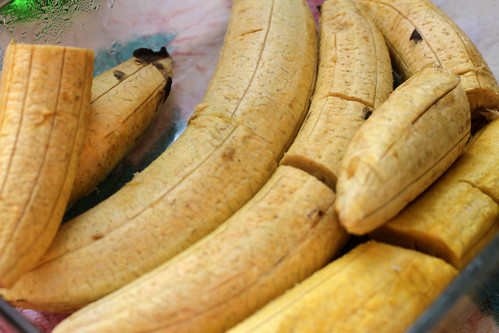
We're cooking green plantains as starch so often that, just like the rice I also served with the meal, I'm probably going to stop calling them out at some point. But one thing I wanted to point out was advice from my mother: it's so much faster and easier to cook them in the microwave! Give it about two minutes apiece, and they're done.
Mango-ginger-lime sorbet | Recipe

A real Congolese meal would probably end in cut fruit, if anything. But I was itching to make a frozen delight, and had the ingredients on hand, so I made this sorbet. I only had two mangoes rather than the five the recipe calls for, and I tripled the ginger, added an extra lime's worth of zest, and put in some sugar water to compensate. All told, the original recipe is probably more of a crowd-pleaser, but if you like ginger and aren't afraid of bitter, try it my way! Oh, and those red things are pieces of papaya bathed in lime juice.
We're heading around the Gulf of Guinea up to Côte D'Ivoire for our next meal. Joining us for the rest of our journey is our sweet new dog Emmylou, a border collie mix who just joined our family on Friday!
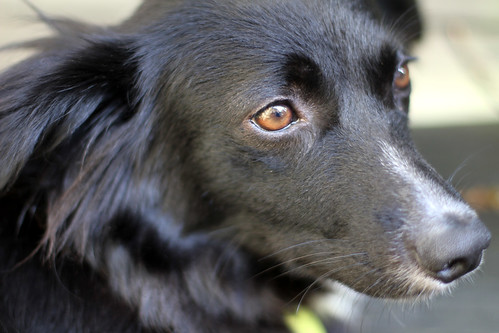
Photos by Laura Hadden, who's looking forward to Emmylou's help eating table scraps.
